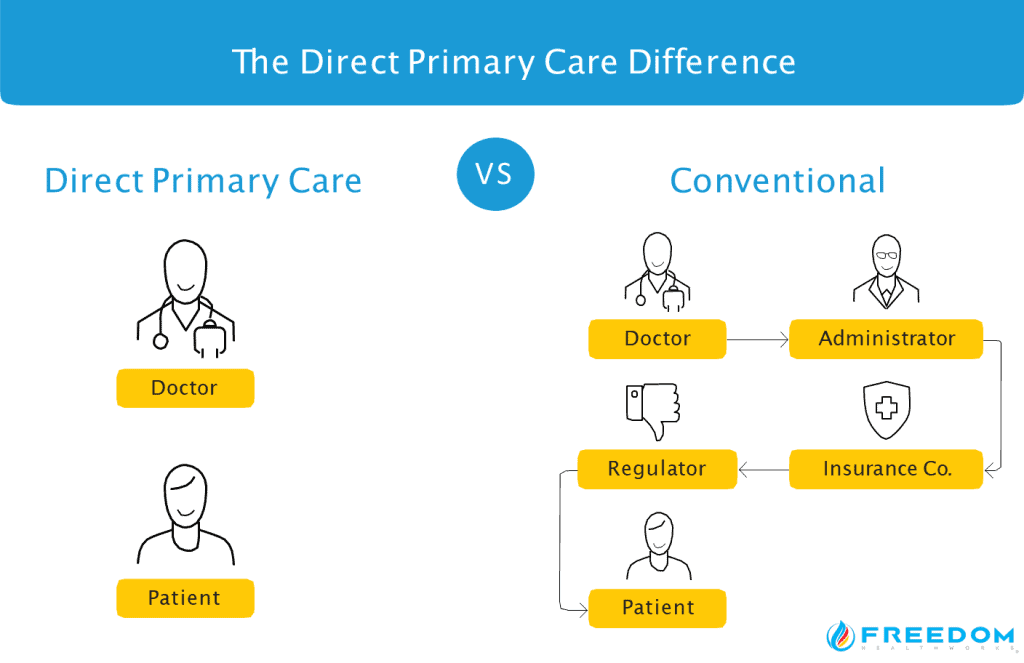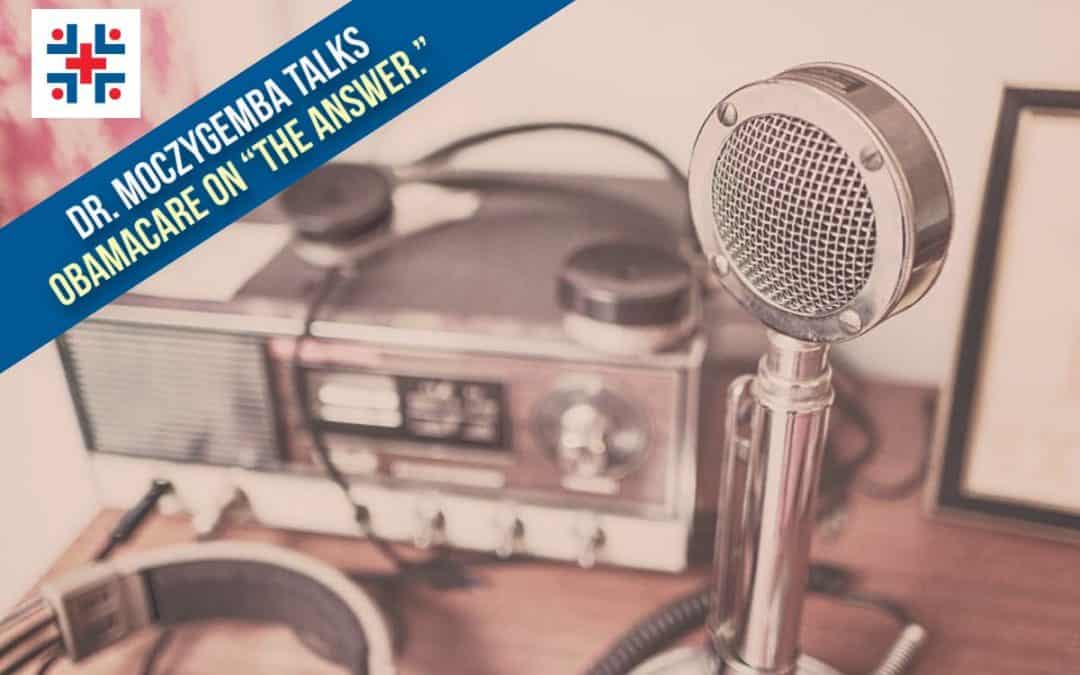
El Conservador: Roger has put together a program, an alternative to Obamacare. Today is the 2nd anniversary of his clinic. Obamacare has become a very, very confusing and cumbersome issue to discuss, and in some ways, I think a lot of politicians don’t want us to discuss it. I know that a lot of the lobbyists definitely don’t want us to discuss it. But let’s talk with Roger, your venture. How is it different, why it’s different and what are some alternatives to Obamacare?
Dr. Moczygemba: Thanks, George, for taking a few minutes to have me on today, especially today because it is the two-year birthday of Direct Med Clinic. I’m thankful to be on the program to just chat and get the word out about something that folks can do to combat the high costs of healthcare which is usually from payments and deductibles. I’ll talk about my program in just a minute, but you were talking about Obamacare, otherwise known as the Affordable Care Act, and how and what that’s done to the current healthcare scenario.
One of the ways that Obamacare or the ACA has contributed to that is with part of the law that is called the Medical Loss Ratio. It mandates that insurance carriers must pay either 80 or 85% of what they collect in premiums for healthcare. The rest of that percentage is what they get to keep. Could you imagine an insurance company issuing a rebate of one year if healthcare costs were lower? No, that’s not gonna happen. But the point is that the whole system is incentivized for more and more healthcare spending. So what that leaves the general public and employers that are paying for healthcare with are really high premiums and really high deductibles. So, with that, I could talk a little bit more about what we offer at Direct Med Clinic.

Dr. Moczygemba: I would like to take credit for the model that we have now, but I can’t do that. It’s been around for a few years, but I gravitated towards it because I love innovation. I saw this model in action while doing some work in Utah and I thought, “Wow, how refreshing is this! Folks in San Antonio need that.” That’s why two years ago I opened the clinic in San Antonio and offered this model. It’s called Direct Primary Care. The way it works is that an individual or an employer paying for an employee pays a membership fee to the clinic on a monthly basis and anytime the member or employee comes to the clinic for treatment, we only charge them $10. The cost of this membership is affordable, in our clinic, it’s less than $2 a day with a membership and then you can come in as much as you want for $10. Now what that does for people is give them affordable access to a doctor and restores the doctor-patient relationship.

This is not insurance, so we tell people to keep your insurance. But probably change it to a high deductible plan so if you need to see a specialist or go to the hospital you’re still covered. And that’s really more what insurance was designed to do.

El Conservador: To cover the high end of the stuff, right? Because if I need—if I cut my finger and I need a couple of stitches, I don’t need to go to the Emergency Room and then have the insurance bill for a couple of thousand dollars, right?
Dr. Moczygemba: Exactly, and we had a wonderful example of the striking difference of the cost taken care of from the patient perspective where we had a young lady share with us how she went to the Emergency Room for an asthma flare up. She goes there, and they gave her a breathing treatment and a steroid shot. Before she could leave, she paid $225. And then they sent her a bill for over $1,000, and she shared with us the amount of the service was over $4,900. That’s what they charged the insurance company, but her portion was the $1,084 plus the $225 that she paid. After this, she got a membership to the clinic, and she had another exacerbation of her asthma. She came to the clinic, after paying her membership fee, monthly, she was paying for $10, she got another breathing treatment and a shot of the steroid and $10 was all it cost her. The other thing that she had, maybe even more importantly is that she was educated on how to take care of her asthma, and she hasn’t had an exacerbation or an attack since then, which she didn’t really get that when she left the ER. So, isn’t that a striking example of cost and access to the doctor?
El Convservador: It’s very, very interesting how you described it at the very beginning. The amount of money that insurance companies have to pay into the Affordable Care Act and how much they get to keep. Of course, they are going to gouge so that they can keep as much as they can because they are a business and they’re paying into the government. On the other hand, you know me, I’ll use myself as an example. At my ripe old age of 69, I of course I may not need anything other than my inhaler and I buy my Bronchaid tablets over the counter, however my insurance the amount that I pay is almost $300 per month and I’m not even using it for anything. So how would your clinic help me in that aspect?
Dr. Moczygemba: You’re like a lot of people. You have a chronic medical condition, but you’re maintained but the cost of the maintenance is greatly inflated or multiplied through the insurance business that you have. Direct primary care is not insurance, but it’s direct access to a doctor. If you contract with us directly, we’ll take care of your asthma, or if you have diabetes or hypertension. We can manage that at a fraction of the cost of getting it managed through your insurance company. We would recommend anybody with a chronic medical condition or just anybody that wants access to a doctor to check out direct primary care and contract directly with the doctor and leave the insurance aside for the big stuff. You can save a lot of money!
El Conservador: So get insurance for catastrophic issues but definitely not for your day to day whatever. A Bandaid, Asprin, whatever….

Dr. Moczygemba: Well, just think about it. Everybody has car insurance, but we don’t use car insurance to change the oil or change the wiper blade.
El Conservador: Excellent example, so Roger, here as we close, tell folks how they can follow up on it. And give your program a pitch. Give your clinic a pitch. Tell us about it!
Dr. Moczygemba: Okay so they can find out more about us on our website: DirectMedClinic.com. If they would like more information or need to talk to their organization I’ve been known to go around and do Lunch n’ Learns for employers. I’m more than happy to do that. On our website you can also learn about a chapter of the Free Market Medical Association which I founded.We had our first meeting last month about price transparency to try to control the high cost of healthcare. And then if you’re a little more politically oriented, then I would recommend supporting the Primary Care Enhancement Act which would allow HSA’s to pay for a DPC membership which is currently not allowed. Employers pay for most of the healthcare in this country and currently a third of employers offer HSA’s plan so by supporting this Primary Care Enhancement Act it would go a long way to increase access for people and allow employers to participate in a great big way.

El Conservador: Dr. Roger thank you very, very much for coming on our show and we’ll get you back on here again because I don’t think that this issue about how to address Obamacare, how to change it, how to go back to how we were, if that’s possible, is over. I think it’s going to continue to be a great debate. It would be very good to hear from the inside of a doctor that’s got a clinic like yourself.
Dr. Moczygemba: George, I just want to say one more thing to your listeners that might be struggling to manage their chronic medical conditions because of the cost. Check out DPC because if you’re going without care and management of your diabetes and hypertension, you might not realize it, but your organs are being damaged irreversibly and it’s so easy for us to provide that affordable access to take care of you through this model.
El Conservador: That’s so true. That’s so true, buddy. Once again, my friends, this is George Rodriguez, El Conservador talking with Dr. Roger Mozygemba on KLUP The Answer.


Recent Comments